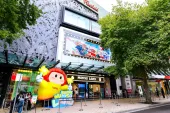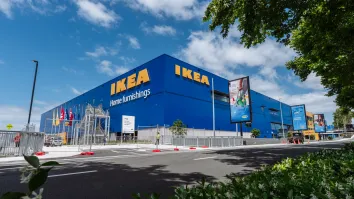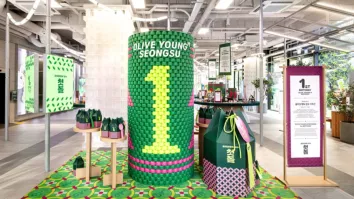
SM Supermalls taps cleaning robots in modernisation push
Malls have become the ultimate third space where digital and physical worlds merge.
SM Supermalls is boosting its investment in technology, including using cleaning robots and self-checkout counters, to improve efficiency and the experience of shoppers, who keep flocking to brick-and-mortar stores despite rapid e-commerce growth.
“Not long ago, people said malls were dying, that online shopping was taking over, and that brick-and-mortar stores were obsolete,” SM Supermalls President Steven Tan told the Retail Asia Summit 2025 in Manila in March. “But is that the real story?”
The Philippines’ biggest mall operator gets visited by 5.2 million shoppers daily, Tan said, adding that online retail accounts for only 7.5% of transactions in the Southeast Asian nation.
“The future of retail isn’t about one replacing the other,” he said. It’s about how online and offline come together to create something even better.”
To enhance in-store experience and convenience, SM Supermalls is modernising its 87 malls in the Philippines and eight in China. The company has rolled out artificial intelligence (AI)-powered concierges, self-checkout systems, and digital kiosks, whilst also introducing cleaning and sanitation robots, electric vehicle (EV) charging stations, and accessibility tools such as screen readers.
SM Supermalls has introduced self-service checkout counters at major retailers such as Decathlon and Pull & Bear, and interactive digital kiosks are being piloted at some locations.
It has also launched Sam, an AI-driven concierge, and the Cyber Crew, a group of virtual influencers that try to engage younger consumers.
At its flagship Mall of Asia (MoA), SM has installed digital displays, including the MOA LED 360 — the Philippines’ largest cylindrical LED screen — and a 1,500 sq m digital installation known as the HUB, encased by a 2,500 sq m LED curtain.
Watsons’ School Point 2.0 store at MoA integrates holographic assistants and AI-powered skin analysis tools, which Tan described as “the store of the future for health and beauty.”
“The question was never really ‘Will AI replace retail?’ but ‘How will AI enhance retail?’” he said. “These are the few questions for us to reflect on.”
Beyond retail, the company is expanding its development initiatives. MOA Sky, a 55,000 sq m rooftop space, features a FIFA-standard football pitch, an amphitheatre, and solar panels.
Net income at SM Prime Holdings, Inc., the parent company of SM Supermalls, rose 14% last year to $797.6b (P45.6b) from a year earlier. Revenue increased 10% to $2.5b (P140.4b), with malls accounting for 55% of sales.
“Malls are no longer just places to shop; they are playgrounds of experience, discovery, and connection, serving as the ultimate third space where digital and physical worlds merge seamlessly,” Tan said.



















 Advertise
Advertise






